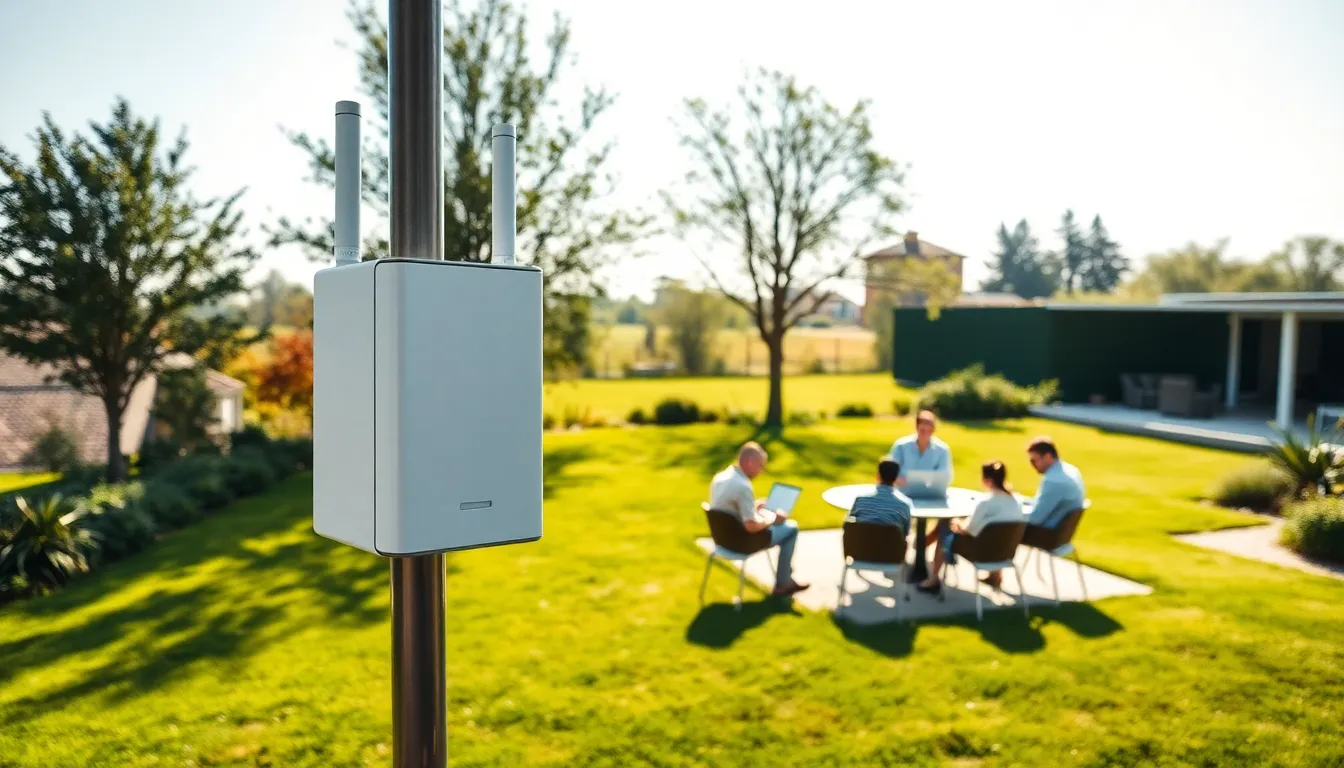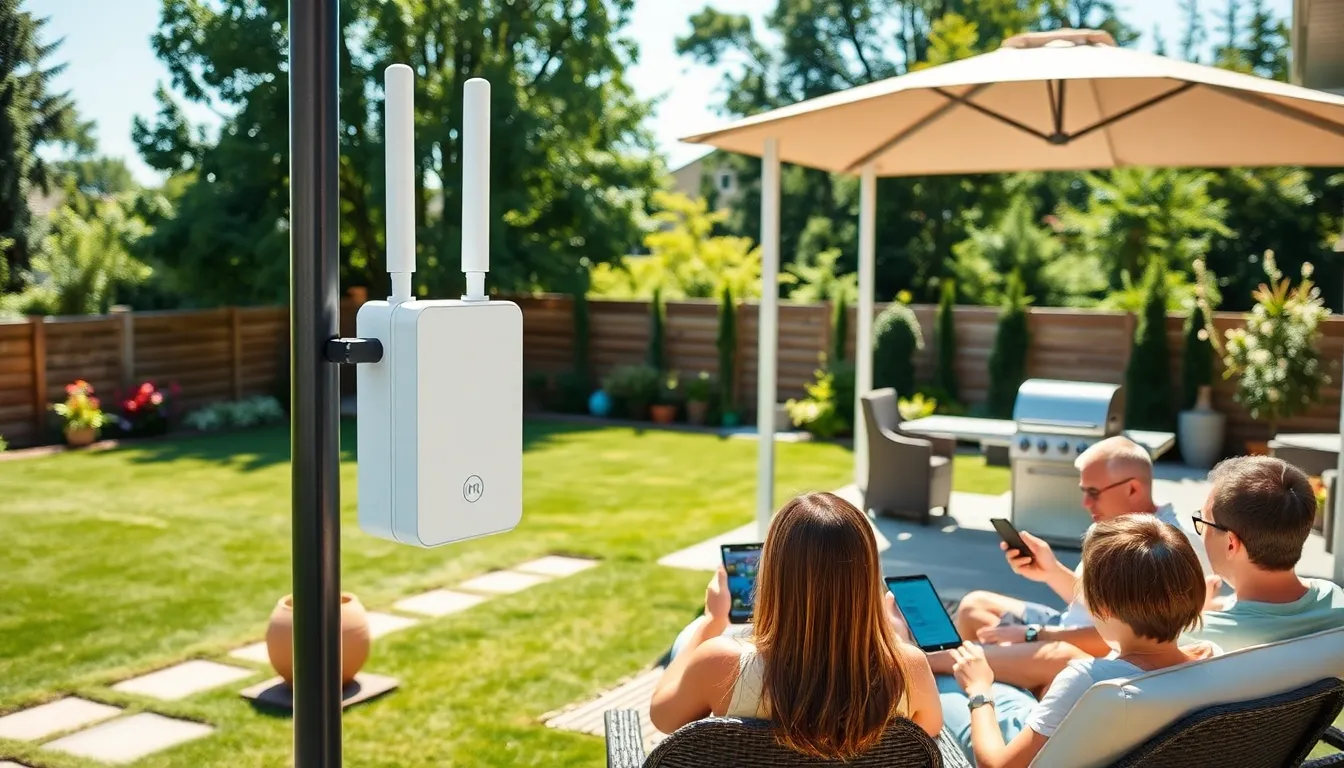In today’s fast-paced world, having a reliable internet connection is as necessary as your morning coffee, especially if you want to stream cat videos on the patio or sneak in some work from the garden. Ever thought about extending your WiFi reach to your outdoor space? Enter the long range WiFi extender for outdoor use. Imagine a weekend barbecue without buffering or relaxing by the pool with a perfect streaming signal. Let’s jump into the world of outdoor WiFi extenders and see how they can transform your outdoor experience, making your WiFi woes a thing of the past.
Long Range WiFi Extender Outdoor

Long range WiFi extenders are designed to amplify your existing WiFi signal, allowing for coverage beyond the walls of your home. These devices function by capturing a weak WiFi signal and retransmitting it, effectively creating a larger area of connectivity. Ideal for sprawling gardens, large patios, or even workshops at the end of the yard, they ensure that you can stay connected no matter where you are outside. Unlike indoor extenders, outdoor models are built to withstand harsh weather conditions while providing stable connections over greater distances.
A well-chosen long range extender can cover areas commonly filled with WiFi dead zones. By placing the extender strategically, he can extend the reach of the primary router, which is often confined to one location inside the house. Outdoor extenders use powerful antennas optimized for long distances, making them suitable for residential use as well as for businesses aiming to enhance connectivity in expansive outdoor areas.
Benefits of Outdoor WiFi Extenders
Outdoor WiFi extenders come with a plethora of benefits that can significantly enhance one’s internet experience. First and foremost, they provide consistent coverage in areas that typically struggle with signal strength, like gardens, pools, or garages. Instead of having to retreat indoors for a better signal, families can enjoy a seamless online experience while entertaining guests or relaxing outside.
Another advantage lies in the versatility of these devices. They can connect easily to a variety of devices including smartphones, tablets, and smart TVs. This means that whether he’s streaming a movie, browsing the internet, or operating smart home devices, connectivity remains strong and reliable. Besides, outdoor extenders often feature advanced security protocols, ensuring that online activity is protected even in open-air environments.
Cost-effectiveness is another significant perk. Investing in an outdoor WiFi extender might eliminate the need for multiple routers or additional monthly service fees for internet extensions. Homeowners can often resolve connectivity issues with a single outdoor extender, allowing for excellent coverage at a fraction of the price.
Key Features to Consider
When on the quest for the perfect long range WiFi extender for outdoor use, it’s crucial to focus on several key features.
1. Range and Coverage: Look for devices that promise extensive coverage. Many extenders boast ranges exceeding 1000 feet. It’s essential to consider the layout of the area being covered, including any obstructions that could weaken the signal.
2. Weather Resistance: Since outdoor extenders will be exposed to the elements, waterproof and weather-resistant casings are a must. These ratings ensure durability against rain, snow, and extreme temperatures.
3. Speed Specifications: Not all extenders are created equal. Check the maximum speed ratings they offer, ensuring they can handle high-bandwidth activities, especially if streaming or gaming is on the agenda.
4. Easy Setup and Configuration: The last thing anyone wants to deal with in the great outdoors is complicated installation processes. Choose devices that either have a simple plug-and-play setup or those that can be configured via mobile apps for ease of use.
Top Long Range WiFi Extenders for Outdoor Use
Several outdoor WiFi extenders stand out in today’s market for their reliability and performance.
1. TP-Link EAP225-Outdoor: Boasting an impressive range and user-friendly setup, this model supports speeds up to 1200 Mbps. Its weatherproof design makes it suitable for outdoor environments, and the PoE capability simplifies installation.
2. Netgear EX3700: Known for its extensive coverage, the EX3700 can effectively eliminate WiFi dead zones in larger areas. It’s affordable and compatible with all standard routers, which enhances its versatility.
3. Ubiquiti UniFi AC Mesh: A favorite among tech enthusiasts, it offers extended range and high-speed performance. Its sleek design and easy scalability make it perfect for expanding coverage as needs grow.
4. Linksys RE6500: With dual-band technology and robust security features, this extender balances performance and safety, making it a solid choice for everyday outdoor use.
Installation Tips for Outdoor WiFi Extenders
Installing an outdoor WiFi extender doesn’t have to be a cumbersome task. Here are vital tips to ensure a successful setup:
- Optimal Placement: Position the extender halfway between the primary router and the area that needs coverage. Elevating the device on a pole or wall can also enhance performance.
- Avoid Obstacles: Minimize interference from large objects like trees or buildings. A clear line of sight significantly boosts signal strength.
- Secure Wiring: If the extender requires power, ensure that all cables are weatherproof and positioned securely to avoid damage.
- Use an App: Many modern extenders come with mobile applications. Leverage these tools for optimized settings and real-time adjustments to your network.
Troubleshooting Common Issues
Even though their advantages, outdoor WiFi extenders can encounter a few hiccups. Here are common issues and their solutions:
- Weak Signal: If he notices weak signals, check the extender’s placement. Relocating it for a clearer line of sight can help.
- Connection Drops: This might indicate interference from other devices or networks. Ensure the extender is not near any electronic devices that could cause disruptions.
- Slow Speeds: If speeds seem sluggish, try rebooting both the router and extender. Regular maintenance and firmware updates can prevent performance issues.

